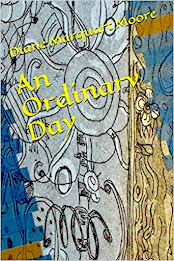 |
| "I was the night sky." |
I once had a
friend from Yugoslavia who had been through the strife of WWII and who often
talked about the poverty she endured during her childhood. “I never had
beautiful children’s books like the ones your mother bought you,” she said. “We
were glad to get good bread and soup and have a warm stone at our feet when we
went to bed.” At the time, I felt dismayed when she talked about her
impoverished childhood, and I appreciated even more the books that my mother
bought for us at Claitor’s Bookstore in Baton Rouge, Louisiana back in the 40’s.
A passage in the introduction to my book entitled Their Adventurous Will:
Profiles of Memorable Louisiana Women refers to Mother’s love of books and
the trips to Claitor’s: “Every month for years, Mother would take one of the
three children in our family to Claitor’s Bookstore to choose two books for our
nightly reading session. She was the first family member to open the books,
touching the pictures with credulous delight. My mother began to fly in the
heavens long before Mary Poppins opened her first umbrella to make her
wonderful flights…” I was privileged to grow up with beautiful books, and my
appreciation for children’s books probably equals my mother’s enthusiasm for
them. I’m sorry that every child doesn’t have the opportunity to grow up with access
to good books.
Yesterday, I
received two copies of a children’s book entitled Willameena Moonbeam, written and illustrated by Ben Blanchard, a
young friend of mine who has done paintings for two of my books and who
illustrated a long poem that became a small book for my grandson Joel. When I
opened Willameena Moonbeam, I thought immediately of the
words that I penned about my mother touching books “with credulous delight.” That’s
how I felt when I touched the illustrations in Ben’s book.
Ben illustrated Willameena Moonbeam using collage and
watercolor techniques and printed, by hand, the text of his long poem. The
theme of the poem concerns Willameena and her young friends wishing for and
actually lengthening a day to one of constant sunlight, a day when the sun “grew
weary …weary of waiting for moon…” Children playing in the fields longed for
more sun, danced and pretended that the day would lengthen…The day did lengthen, but the youngsters became
hungry, and one of them cried out, “Surely we’ll grow thinner/if we keep on
playing/without any dinner.” Unfortunately, the parents of Willameena and her
friends decided they couldn’t call their offspring indoors while it was still
light, and the children became aware that they had achieved more than they had
bargained for.
One of the
beautifully-illustrated scenes in Willameena
Moonbeam shows the children trying to capture darkness by getting under
umbrellas, but even then, the sun doesn’t vanish, and they’re forced to solicit
the help of their grandparents to bring on the night. According to “The Elders,”
the solution involves the use of a patchwork quilt dress that Willameena must wear
and dance in so that she becomes part of the night sky. “I was twirled by my
music and from afar/my long dress made a canopy of quilted stars,” Willameena
explains. “Like a thousand pearls…all strewn/were actual stars in procession
with moon…” Willameena dances the day into night, the moon finally rises, and
all is well in the skies above. Ben brings his poem to a close as Willameena
bows her head and finally accepts the fact that “it’s time for bed.”
Ben Blanchard is
originally from Lafayette, Louisiana and currently lives in Austin, Texas. His
multimedia projects include works in music, film, and collage. Willameena Moonbeam is the first book he
has written and illustrated. Ben graduated from the Raw Food Preparation and Organic
Gardening School sponsored by the Tree of Life Rejuvenation Center in Arizona and
practiced as a raw foodist for a few years in Sedona, Arizona and Lafayette,
Louisiana. One of his delicious raw food specialties that I’ve sampled is “Third
Eyes Cream,” a dessert made with frozen bananas, raw chocolate, and Goji
berries. Ben’s original drawings also appear in a book we published together
entitled The Beast Beelzebufo. We share
a mutual interest in the comic strip “Peanuts,” and have shared ideas in
artistic sessions held at tables in Starbucks.
Willameena Moonbeam is an artistic
achievement that will engage the interest of any child…as well as grown
children like me and my fantasy-loving mother (deceased).
You can order Willameena Moonbeam from Ben Blanchard, 1200
Elm Street, #114, Austin, Texas 78703.


.jpeg)















